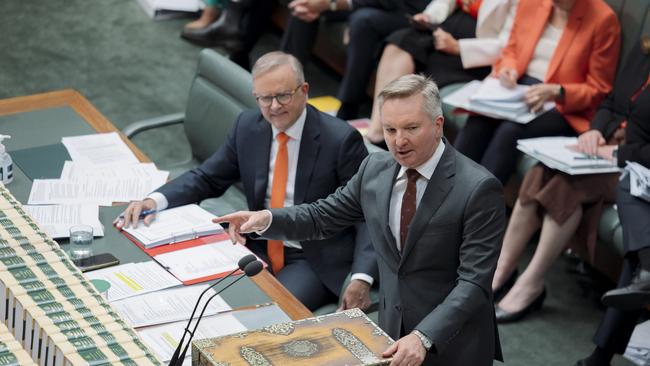
Australia and its biggest non-banking company, BHP, face the same nation- and company-changing event over the next five years: the price of iron ore, which has dominated their fortunes for the last half century, is set to fall sharply.
The world will probably blame the looming Donald Trump tariffs for the iron ore outlook change but what we are actually seeing is a massive directional change in China as the country moves away from the enormous investment in producing goods and infrastructure that has required massive amounts of steel and iron ore.
Not only will steel enter a phase of lower demand, but scrap steel will replace part of the lower demand for iron ore.
The BHP response is to select the metal they believe will the “new iron ore” – copper. During the next decade, BHP will embark on the biggest set of capital investment projects ever attempted by an Australian company. It does not plan to raise equity capital but will direct the iron ore cashflows into the new copper-based era.
When BHP entered the iron ore era in the 1960s, investment in Australia dominated its strategies. In the copper era it will be a global investment plan, but the largest copper project is scheduled for Australia.
Australia’s politicians and public servants are isolated in Canberra. They have no idea that the two main sources of wealth and social welfare funding – tax revenue from iron ore and cheap energy – will decline steeply in the 2030s.

Historians in the next decade will document how Australia responded to these nation-changing events with strategies that showed complete ignorance of what was set to happen.
State and federal governments have decided to move Australia from a low-cost energy nation to one of the highest in the world with a $660bn investment plan that will send power costs upwards.
Other nations looking to reduce emissions are containing power costs by increasing nuclear.
Paradoxically, BHP’s main non-copper expansion, Canadian potash, will buy power sourced from nuclear energy at a fraction of Australia’s energy costs. Australians would profit greatly by setting up a “go fund me page” to send Energy Minister Chris Bowen to Canada to discover the low costs of nuclear energy.

Meanwhile, a second Canberra response to the looming revenue loss is to declare a type of war on our major enterprises, led by BHP, via special legislation to boost operating wage costs and lower productivity. BHP is in the front line, but the whole Australian industrial sector is the government’s target.
The “Big Australian” has five massive areas of copper expansion which have the potential to double its copper production from around one million tonnes to two million tonnes by the early 2030s. (The actual copper production from BHP ventures will be much greater, but the above figures exclude the interests of its partners in the four projects.)
The copper price has so far not risen to the levels BHP expects in a few years when the current period of excess supply ends and shortages emerge.
But the share prices of pure copper producers have risen in anticipation of price rises.
First cab off the BHP expansion rank looks set to be the large US underground mine Resolution, owned jointly with Rio Tinto.
Most of the base mine construction has been completed, but there remain problems with the local Indian tribes, plus regulatory approvals. The mine was set to be approved under President Biden, but is now likely to be fast-tracked by Trump. Both Biden and Trump understand the need for copper in this new era.

The next copper mining complex on the BHP schedule should be the giant South Australian copper ore bodies. The project is said to be one of the largest ever attempted in Australia because it includes treatment plants and very likely a smelter.
Canberra is doing its best to discourage BHP. The company is in the courts trying to determine what the “same job, same pay” rules in the industrial relations act mean when applied to South Australia.
If BHP lose the court cases then not only will the economics of iron ore change but, in theory, South Australian could even lose its place in the BHP copper development queue to Chile and Argentina.
But like other Australian companies, BHP is now accelerating efforts to transform the economics of mining and mining maintenance via artificial intelligence.
Accordingly, workers on higher pay and delivering lower productivity thanks to the new industrial relations legislation may lose their jobs.
Under the BHP South Australian plan, a highly productive mining complex will require treatments plants and perhaps a smelter that uses the best energy source available. The costs of mining copper will be much higher than iron ore.
Under the current plan, BHP’s Escondida mines will expand and then a smaller mine in Argentina will follow. Then comes a major expansion, again based in Argentina but including neighbouring areas in Chile. South America becomes a vital part of BHP’s five-stage expansion of copper. Further projects will arise.
BHP and most companies in Australia are dealing with a government that simply doesn’t recognise what is ahead. Hopefully whoever wins the next election, and it could be the ALP, will understand what is taking place in the world. If it doesn’t then we have a grim future as we haggle over a lower revenue base.




